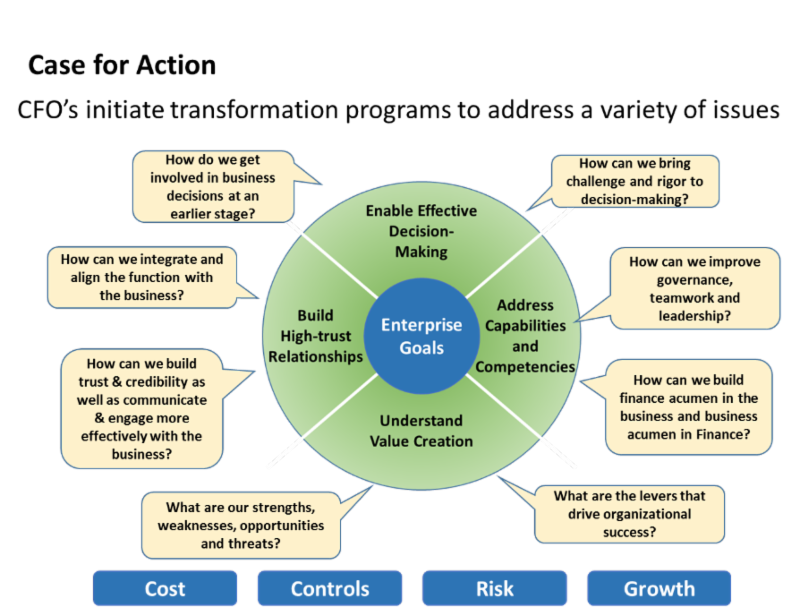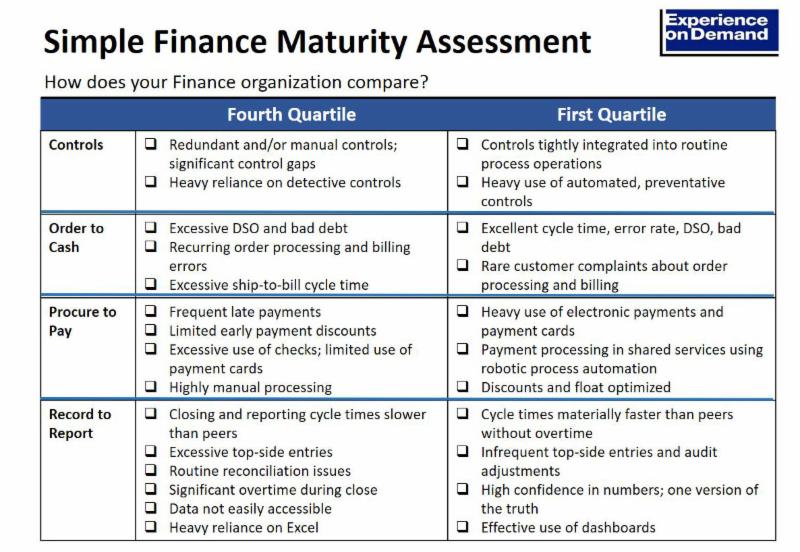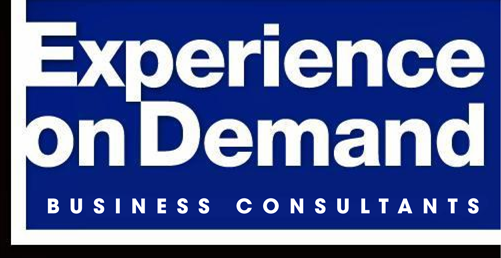By, Steve Finkelstein – Senior Partner
Key Elements of a Successful Finance Transformation Program
In the first two parts of our series on Finance and Accounting (F&A) transformation, we discussed the importance of the strategic role the Finance organization should be playing and the Experience on Demand Finance Maturity Model which can be used to identify and prioritize improvement objectives.
In this third and final part we will provide a brief overview of the key elements of a successful transformation program. Before working the details of the changes planned as part of the transformation program it is important to define the Finance function objectives, the case for change and the program roadmap.
The Objective Statement usually articulates the Finance organization value proposition and addresses the role of finance, cost positioning (e.g., first quartile as measured by percent of revenue), relationship with the business, cultural values, employee value proposition and the use of technology. A well-defined objective statement can be used throughout the transformation program, initially in establishing alignment (both within Finance and with the business) and developing targets and priorities and later in validating progress. It can also serve as the foundation in communications with all stakeholder groups.
Some companies formally define vision, mission and operating principals to more fully articulate the what, why and how of the objective statement. In our experience either approach is fine as long as there is a clear statement of purpose and intent and it doesn’t take months of needless debate to finalize. The Case for Action should align with the objectives but should be more specific with regards to the expected results. In defining the case for action the following questions should be considered:
- Can the enterprise achieve strategic objectives with the current contribution from the finance organization? If not, what must change?
- Could the finance organization contribute to incremental enterprise value generation by doing things differently? Lower cost? Improved capital efficiency? Better data for faster decision-making? Better understanding and management of financial risks?
- What are the risks and costs of doing nothing?

The Transformation Roadmap will articulate the key steps in the program at a relatively high level, i.e., the top level elements of a fully detailed project plan. This is usually in a Gantt chart format and is often referred to as the “plan on a page”. In addition to providing the structure for the detailed project plan, the roadmap is used in stakeholder engagement to explain what and when. A good roadmap will also reflect key events outside the transformation program that drive the timing of key program activities. There are a number of things to consider in defining the Transformation Roadmap, including:
- Constraints – people and financial resources, competing business priorities
- Risk mitigation – sequencing steps to achieve the right balance of benefit realization and disruption prevention
- Critical success factors – what has to happen for the program to be successful
- Stakeholder management – activities required to establish and sustain support for the program and all the individual changes
- Metrics, KPIs – defining the measures of success and how to produce the required data
- Short term wins – finding ways to generate benefits early to build momentum and confidence and to help fund the larger program
While program governance and program management are usually not reflected on the roadmap other than as a step to get them established, it is important to think them through in determining pace.
- Program governance – the approach to decision-making, prioritization and conflict resolution
- Program management – the approach to budget management, risk management, issues management and schedule management
The out years of a multi-year transformation program don’t have to be fully defined before the initial transformation work can start but you must be clear on initial priorities, what will be deferred and the consequences of deferral. Equally important, you must be clear on how you will manage your response to events that affect priorities and schedule. No Finance Transformation program has been completed with just one version of the roadmap.
Check our simple Finance Maturity Assessment to see how your organization compares to the leaders.

